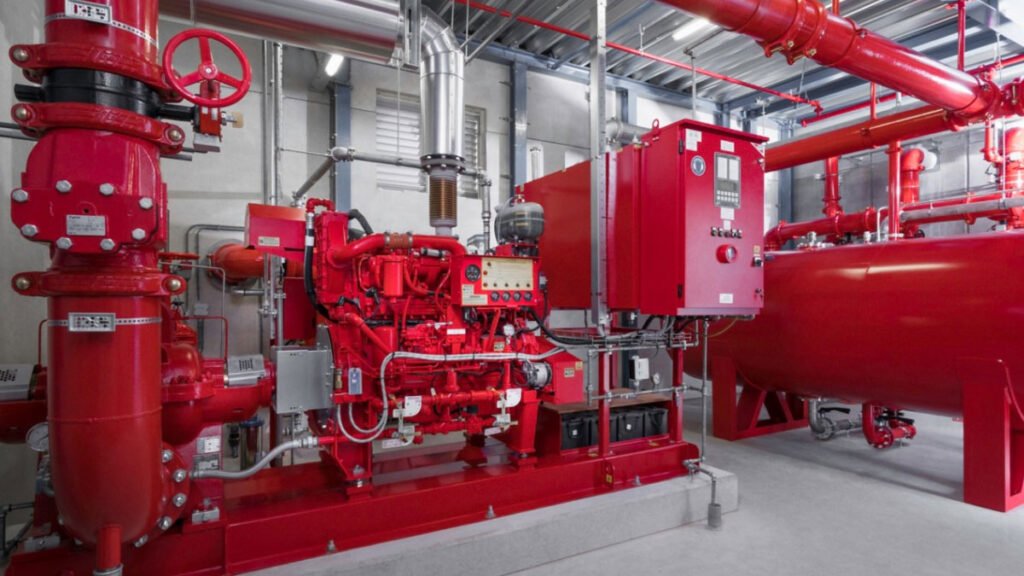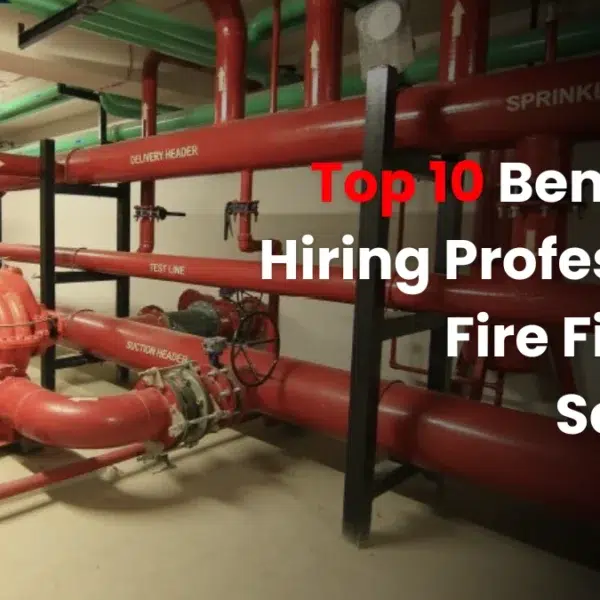What is the Role of Fire Fighting Pumps in Fire Safety Systems


What is the Role of Fire Fighting Pumps in Fire Safety Systems
Fire Fighting pumps have an important role in the fire safety system in a building especially in high-rise structures. In buildings with levels from 400-500 ft. and higher, fire pumps are essential distributing water through sprinkler systems where water pressure from water mains and fire fighting equipment cannot run.
Even in lower-set facilities, a fire pump is important for having a fire. Firefighting, at its best, is a hazardous business, but without a well-designed and professionally installed system and pump it evolves even more difficult, and business support and lives are put in greater danger.
What is Fire Fighting Pump?
A fire pump refers to increased water pressure for fire suppression systems like sprinklers, standpipes, and foam systems. It is also used in fire trucks and fireboats to boost water supply for firefighting hoses.
How Does a Fire-Fighting Pump Work?
A fire pump is an important part of a fire sprinkler system, providing high-pressure water to boost the flow rate. It draws water from an underground source, tank, lake, or reservoir and is powered by electricity or diesel. The pump system contains a motor (driver) and a controller, providing water runs sprinkler heads and hose standpipes efficiently.
Main Components of a Fire Fighting Pump System are:
1. Pump: It is the heart of the system that is responsible for moving water from the source to the fire protection system.
2. Driver: It is usually an electric motor or diesel engine and powers the pump.
3. Controller: It manages the function of the pump and driver, providing the system activates a fire emergency.
4. Jockey Pump: It supports system pressure and has the main fire pump from standard cycling.
5. Water Source: It can be a municipal water collection, a reservoir, or a water tank.
Types of Fire-Fighting Pumps
- Horizontal Split Case – Most common, economical for high-flow needs, easy to maintain, and long-lasting.
- Vertical Split Case – Similar to horizontal but designed vertically to save space and control flooding damage.
- Vertical In-Line – A single-stage centrifugal pump with a compact design, ideal for small spaces but needs removal for repairs.
- Vertical Turbine – Designed for underground water sources like wells, lakes, and streams, available in oil- or water-lubricated versions.
Choosing the right fire pump according to the facility’s needs should be discussed with a design engineer, fire safety professional, and Local Authority Having Jurisdiction (AHJ).
The Role of Fire-Fighting Pumps in Fire Safety Systems
Fire pumps play a very important role in fire safety systems, protecting lives and property. It is the backbone of water-based fire protection and provides the system to operate effectively under emergencies.
1. Increasing Water Pressure: Fire pumps are essential in places with low water pressure or high-rise buildings. They ensure that water reaches its destination to avoid fires by providing the pressure sprinklers, standpipes, and hydrants required.
2. Promoting Reliable Fire Suppression: Low water pressure might cause fire suppression systems to fail. Fire pumps enhance the overall reliability of fire safety systems by ensuring regular water flow.
3. Helping Various Applications: Applications for fire pumps include manufacturing plants houses and apartments. They are essential for fire safety because of their flexibility and maintenance by regulations like NFPA 20.
4. Types of Fire Pumps: It is easier to choose the best option according to specific fire protection needs when one is aware of various types of fire pumps, like electric, diesel engines, and jockey pumps. Every kind is made to fulfill certain functioning needs.
5. Maintenance and Testing: The performance of fire pumps depends on regular inspections and maintenance. Emergency preparedness is maintained by regular inspections and attention to safety rules.
Installing and Maintaining Fire Fighting Pumps
Fire safety professionals should handle the installation and maintenance of fire pumps, just like the system selection. The National Fire Protection Association (NFPA) and International Building Code (IBC) set guidelines for installing and maintaining that are updated regularly.
While weekly inspections can be done by trained on-site staff, monthly, annual, and further inspections must be handled by qualified professionals. These have factory-trained, nationally certified, or state-licensed personnel.
Conclusion
A fire Fighting pump is an important fire and life-safety equipment in different types of buildings. There are many needs and components to be considered before the installation. If you want smoke detectors, fire extinguishers, or an automatic sprinkler system installed at any commercial property, the Firefighter industry helps you cover it. We Damia Global Services have been protecting people and properties from fire damage since 2016—and our expertise shows in our excellent work! We are known for the best customer service, our expertise, and our reliability. For more information related to how we can help your residential or commercial property, you can visit us online or WhatsApp us!
frequently asked questions
What is a fire fighting pump used for?
In many water-based safety systems, fire pumps are an essential part. When a water source’s pressure (measured in psi and bar) is low for the system it equipment, they are used to increase it.
Why are fire safety pumps important?
Without a fire pump, the system’s water pressure would not be suitable to control or place out a fire, which could lead to more damage to the building and put its people at more risk.
How to Use a Fire-Fighting Pump?
- Turn on the fuel.
- Set the choke to “On.”
- Pull the starter cord. If the pump doesn’t stay running, slightly adjust the throttle.
- Once the pump starts, turn off the choke.
- Slowly increase the throttle to full power.
https://youtube.com/watch?v=cveuVXqrYq4https%3A



